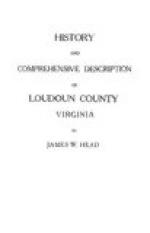[Footnote 26: Many of the Germans of Loudoun served in this regiment which participated in the Battle of Baltimore.]
Mason’s side was defeated. He earnestly wished to avoid a duel, but McCarty continued to provoke him, with the hope of compelling him to fight. This he finally decided to do. He left his home without revealing his intentions and on reaching Washington made his final preparations with great deliberation. “The Chief of Selma” fell February 6, 1819, his heart pierced by the ball of his antagonist. He was but 32 years of age. His body was borne to Leesburg, where it was buried in the Episcopal churchyard, with an imposing Masonic ritual. The grief of his slaves was painful to witness. His only child became an officer in the United States army, and was mortally wounded in the battle of Cerro Gordo.
HOME OF PRESIDENT MONROE.
“Oak Hill,” the country seat of James Monroe, ex-President of the United States and author of the world-famed Monroe Doctrine, is situated near Aldie, in Loudoun County, on the turnpike running south from Leesburg to Aldie, about nine miles from the former and three from the latter place.
The main building, with an imposing Grecian facade, was planned by Monroe while in the presidential chair, and its construction superintended by William Benton, an Englishman, who served him in the triple capacity of steward, counselor, and friend. The dimensions are about 50 by 90 feet; it is built of brick in a most substantial manner, and handsomely finished; has three stories (including basement), a wide portico fronting south, with massive Doric columns thirty feet in height, and is surrounded by a grove of magnificent oaks, locusts, and poplars, covering several acres. It has been said that prior to his inauguration he occupied a wooden dwelling of humble pretensions standing within a stone’s throw of its palatial progeny. Monroe’s term of office expired March 4, 1825, and soon after the inauguration of his successor he retired to “Oak Hill,” which immediately became, like Monticello and Montpelier, although to a lesser degree, a center of social and political pilgrimages.
The financial affairs of its owner were seriously embarrassed from the first, and he labored in vain to obtain justice from the country he had served so long and so well, at heavy pecuniary cost and loss. His old friend, Lafayette, now once more prosperous, sent an offer of assistance with a delicacy and generosity which did him honor. A little was done at last by Congress, but not enough, and the day came when “Oak Hill” was offered for sale.
While residing here, the post of regent of the University of Virginia, which was instituted in 1826, was accepted by Mr. Monroe as not inconsistent with his view of the entire retirement from public life becoming an ex-President. Associated with him in the discharge of his duties as regent, as in so many long years of patriotic toil, were Jefferson and Madison.




